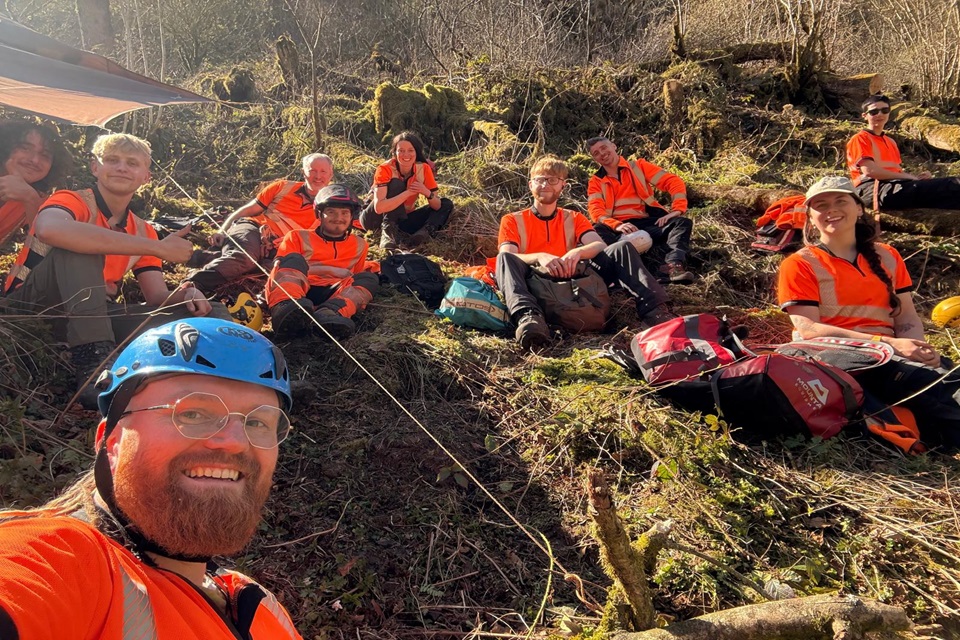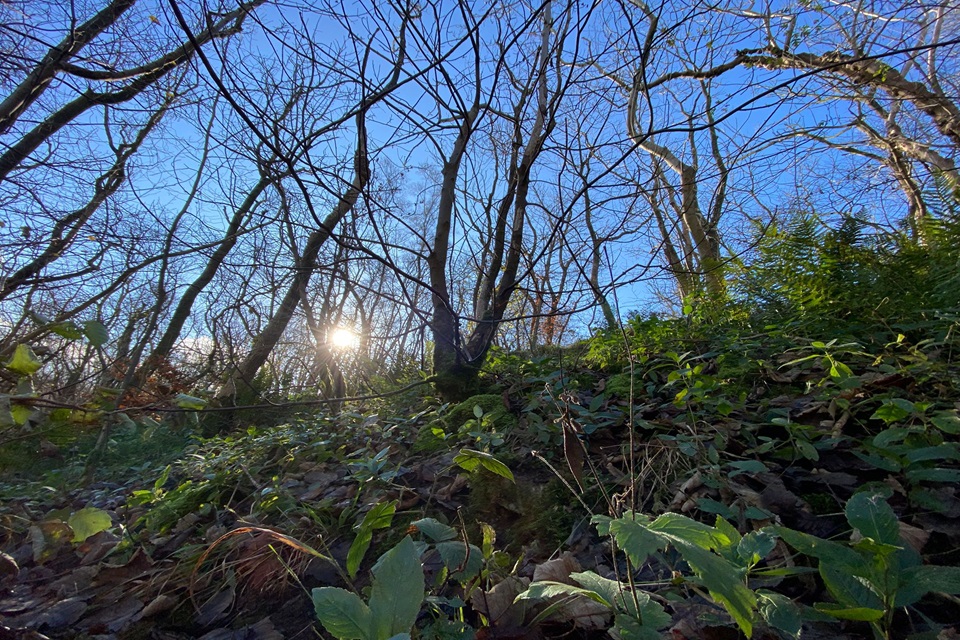Over 84,000 native trees have been planted across the Peak District Dales to combat ash dieback disease.
Precious ravine woodlands across the Peak District are being brought back to life through the largest restoration project of its kind, with 84,000 native trees now planted to replace those lost to ash dieback disease.
The 5 year LIFE in the Ravines project has successfully restored up to 25% of the region's most severely damaged woodlands. It creates resilient habitats that will protect this rare ecosystem for future generations.
Natural England's partnership project has focused on the Peak District Dales Special Area of Conservation, where ash dieback has devastated ancient woodlands. Teams have replanted a diverse mix of species, including the foundation species large-leaved lime, small-leaved lime, and wych elm trees that historically thrived in these unique limestone ravines.

Credit Nate Evans. LIFE in the Ravines restoration team on site.
Martin Evans, Woodland Restoration Manager for Natural England said:
"The success of the LIFE in the Ravines project shows what can be achieved when we work with nature rather than against it. By planting 84,000 trees, we're not just replacing what was lost to ash dieback, we're creating more diverse and resilient woodlands that will thrive for generations to come.
"These restored ravine woodlands are truly unique habitats, and this project demonstrates Natural England's commitment to protecting and enhancing our most precious natural environments whilst supporting the government's environmental priorities."
The restoration work tackles a critical environmental challenge. Without intervention, entire woodlands would have been lost to the fungal disease that kills ash trees. The project has prevented this ecological disaster whilst creating more diverse, resilient habitats.
Derbyshire Wildlife Trust has seen remarkable success across their managed sites with 16,000 trees planted in the Wye Valley including Cramside, Cheedale, and Millers Dale. The new plantings form the foundation for naturally expanding woodlands that will colonise surrounding areas over time.
Kyle Winney, Living Landscape Officer for Derbyshire Wildlife Trust said:
"Although it's devasting to see the effects of ash dieback, it has provided us an opportunity to restore the ravine woodlands that would have been much more diverse before human impacts. The native trees we've planted form the foundation of a more diverse woodland that will be more resilient to future challenges such as weather extremes and disease."
Seeds collected directly from existing trees within the ravines are being grown by specialist nurseries and community groups. This local approach ensures planted trees can thrive in the challenging conditions of steep, rocky limestone terrain.
The project represents 16% of the UK's ravine woodland - a European Priority Habitat. As tree planting targets are met, teams are preparing for their final restoration season in autumn 2025, including work in the Via Gellia woodlands.

Credit Mark Newton. LIFE in the Ravines woodland site.
This restoration directly supports the government's environmental mission to make Britain a clean energy superpower by strengthening natural ecosystems that store carbon and support biodiversity. The project demonstrates how targeted intervention can reverse environmental damage whilst building climate resilience.
Notes:
- The £5 million LIFE in the Ravines project is led by Natural England with partners including Derbyshire Wildlife Trust, Staffordshire Wildlife Trust, the National Trust, and Chatsworth Estate.






